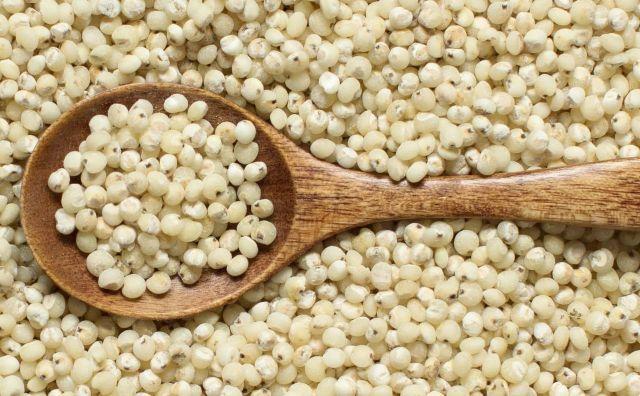
Gluten free, rich in magnesium and vitamins. Let's find out all the characteristics and properties of sorghum together.
- What is sorghum
- Sorghum cultivation
- Properties and benefits of sorghum
- Calories and nutritional values of sorghum
- What does sorghum taste like
- Uses of sorghum in cooking
What is sorghum
Sorghum (S. vulgare) it is an ancient cereal belonging to the Graminaceae family.
It has a small and round shape and usually a color that varies from white to yellow.
Sorghum cultivation
Although little known in the Western world, sorghum is the fifth most cultivated cereal in the world!
There are several species, the best known of which originates in Africa, while the others originated in Australia, India and South East Asia.
Ad today the sorghum plant is also cultivated in the town, mainly in the central-northern regions, especially in Emilia Romagna.
You can learn more about the ailments and natural remedies for diabetes
Properties and benefits of sorghum
Sorghum it is a naturally gluten-free cereal, therefore, also suitable in case of celiac disease or gluten sensitivity.
In addition, it is rich in B vitamins, magnesium and antioxidants.
It is also a 'excellent source of fiber, but, as for other cereals, whole sorghum is preferred.
At the moment, there are no known contraindications to sorghum.
Calories and nutritional values of sorghum
100 g of sorghum provide:
- 329 kcal
- 10,6 g protein
- Lipids 3,4 g
- G carbohydrates 72
- Sugars 2,5 g
- Fiber 6,7 g
What does sorghum taste like
Sorghum has a sweet and delicate flavor, therefore it lends itself well to the elaboration of various dishes. The recipes with sorghum, in fact, are really numerous and you can indulge yourself in always creating new combinations!
Plus, cooking sorghum is really simple, just like other grains like rice or buckwheat.
Uses of sorghum in cooking
The use of sorghumThanks to its versatility, it is very varied in the kitchen.
It can be used to create pasta dishes, as a substitute for other cereals such as rice or buckwheat and can be served be hot, for example, in the form of soup with vegetables, how cold for example, such as sorghum and vegetable salad.
Furthermore, it is excellent when combined with legumes and spices, but also useful to accompany meat or fish.
READ MORE
Sorghum among gluten-free cereals
3 recipes with sorghum
Bibliography and sources
Sorghum Grain: From Genotype, Nutrition, and Phenolic Profile to Its Health Benefits and Food Applications, Comprehensive Reviews in Food Science and Food Safety


























